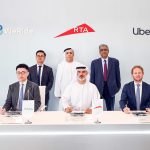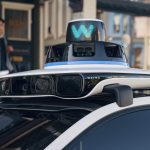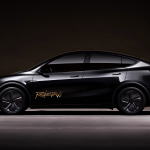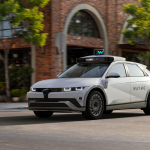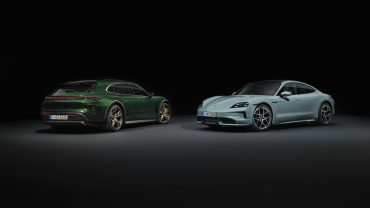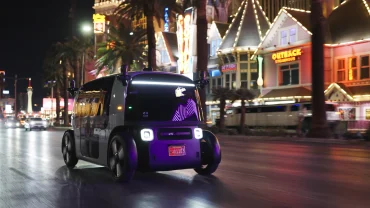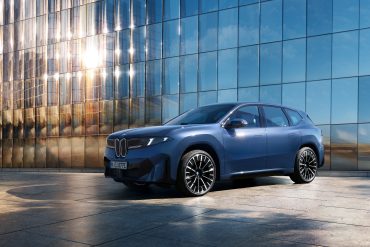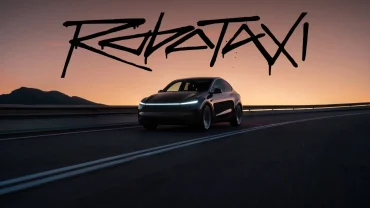
- Autonomous Vehicles
- AV Regulation
- Mobility Tech
Tesla Robotaxi Launches in Austin: Cheaper, Camera-Only AV
5 minute read

Tesla’s robotaxi service launches in Austin with camera-based automation technology that slashes traditional ride-hailing operating costs
Key Takeaways
- Tesla targets $1.4 trillion robotaxi market with Austin trial showing 50% cost advantage over Uber and projected $17 billion profit by 2035
- William Blair values robotaxi segment at $299 per share contributing to $357 total fair value, well above current trading levels
- Aggressive scaling from 10 to 1,000 vehicles planned despite operating at Level 2 automation with required safety drivers
Introduction
Tesla’s robotaxi service launches in Austin at half the cost of traditional ride-hailing, marking the company’s bold pivot from automaker to autonomous mobility platform. The trial showcases Tesla’s ability to undercut competitors through cost-effective technology that analysts estimate costs one-tenth of Waymo’s hardware-intensive approach.
William Blair describes Tesla’s autonomous driving experience as delivering a “friendly ghost chauffeur” feel, contrasting sharply with competitors’ more robotic operations. The financial stakes are substantial, with the firm projecting Tesla could capture one-third of what analysts estimate will become a $1.4 trillion market by 2040.
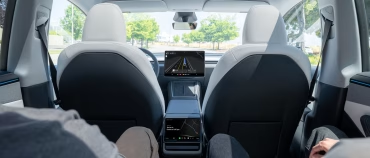
Key Developments
Tesla’s Austin robotaxi trial operates with approximately 10 vehicles, each staffed with a human safety driver in the front passenger seat. The service demonstrates Level 2 automation, where drivers remain responsible for vehicle control while assisted by automated features.
William Blair analysts report the driving experience as “smooth and human-like, recognizing and patiently waiting for pedestrians, switching into less crowded lanes, patiently waiting to execute a safe unprotected turn.” This contrasts with Waymo’s approach, which analysts describe as “more robotic” with spinning lidar sensors and required safety briefings.
The company plans rapid expansion from 10 vehicles to 1,000 within months, targeting public launch this September. Tesla’s camera-and-AI-only approach eliminates expensive hardware costs that burden competitors like Waymo and Cruise.
Market Impact
Tesla stock trades at $330.56, down 1.5% recently, with a market capitalization of $1.07 trillion and P/E ratio of 191.08. The company’s valuation increasingly hinges on autonomous vehicle success rather than traditional EV sales.
Institutional investors show mixed reactions to Tesla’s robotaxi pivot. RW Investment Management cut holdings by 36.2% during the first quarter, while Watts Gwilliam lifted its position by 59.5% to 21,798 shares worth $5.65 million.
William Blair maintains an “Outperform” rating but reduced Q2 delivery estimates to 355,000 vehicles from 385,000 consensus, citing weaker international sales and expiring U.S. tax credits.
Strategic Insights
Tesla’s robotaxi strategy addresses cooling demand for its traditional EV lineup amid rising competition. The shift positions Tesla as an AI-driven mobility platform rather than a conventional automaker, fundamentally altering its business model and growth trajectory.
The company’s cost advantages stem from eschewing expensive lidar technology in favor of camera-based systems and neural networks. This approach reduces hardware costs but potentially delays full autonomy compared to competitors using more sophisticated sensor arrays.
Tesla faces significant regulatory hurdles with approvals pending across key states. Recent litigation, including a $243 million verdict over Autopilot defects, highlights safety and reliability challenges that could impact expansion plans.
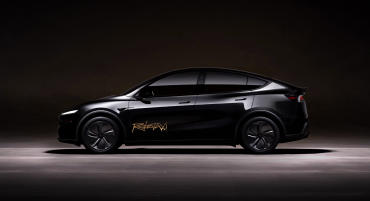
Expert Opinions and Data
William Blair estimates Tesla could capture 35% market share of future robotaxi demand, compared to Waymo’s projected 15%, Uber’s 38%, and Lyft’s 13%. The analysis projects total rideshare miles reaching 1.1 trillion annually by 2040, with average costs dropping from $2.50 to $1.25 per mile.
Industry experts remain skeptical about Tesla’s timeline claims. Analysts note the performance gap between Tesla’s current capabilities and fully autonomous competitors, estimating Tesla needs 2-5 years to achieve safe, fully autonomous operations at scale.
The firm projects Tesla’s robotaxi business could generate nearly $250 billion in revenue with EBITDA margins approaching 60%. William Blair values the robotaxi segment at $298.61 per share, with energy and automotive divisions adding approximately $60 more to reach total fair value of $357.43 per share.
Conclusion
Tesla’s Austin robotaxi trial demonstrates promising cost advantages and user experience improvements over traditional ride-hailing services. The company’s camera-based autonomous approach offers significant hardware cost savings compared to lidar-dependent competitors.
Success depends on Tesla’s ability to navigate regulatory approval processes, scale operations rapidly, and resolve ongoing safety litigation. The robotaxi segment represents a fundamental shift in Tesla’s business model, with substantial upside potential balanced against technical and regulatory execution risks.
